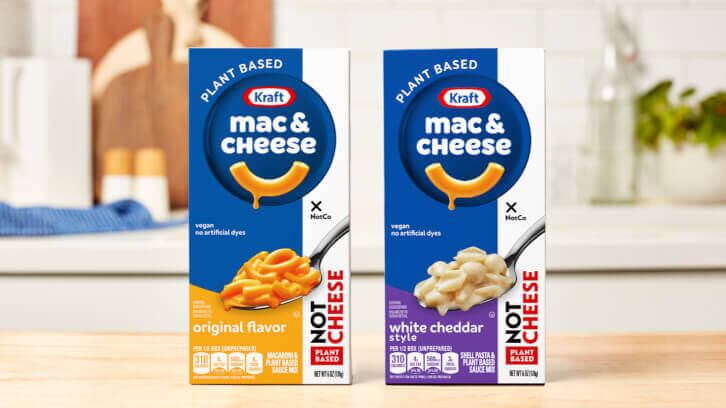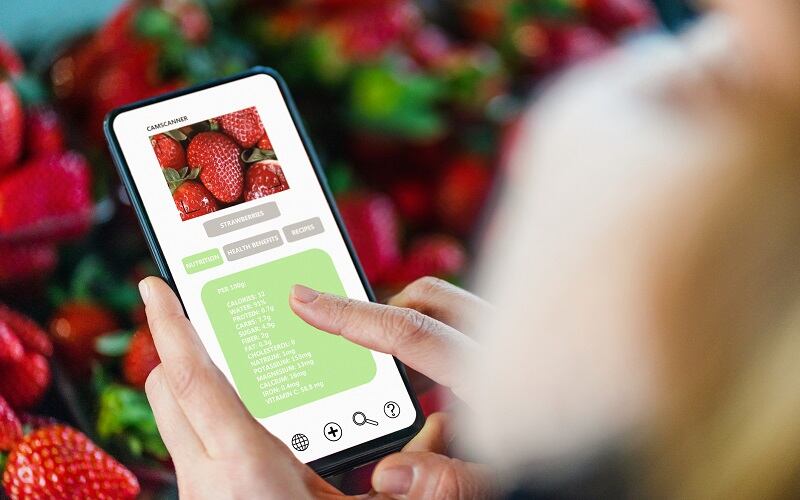“AI is not the future; it's the present. It's the key to the success of the industry, and we need to implement it in a much faster way as a market, and it will be the key to continue growing together.”
Can AI spearhead widespread digital transformation in the industry?
AI arrives at a time when the food and beverage industry faces a host of challenges from managing increasingly complex supply chains issues to staying on top of consumer trends. Tastewise's AI-based platform provides generative AI tools to create marketing assets and product photos and real-time consumer insight into consumer trends, claims, and popular ingredients, based on social-media data.
Despite recent advancements around food delivery and shopping apps, the food and beverage industry has lagged other industries when it comes to digital transformation, Botbol acknowledged.
Food and beverage "is one of the industries that is taking the longest digital transformation," Botbol said. "To move such a big market with so many stakeholders, it's much more complicated than moving a smaller [market]. The growth of the food and beverage market year over year is bigger than any market in the world or the majority of the markets in the world.”
Botbol added the industry is using AI to catch up to digital transformation goals and find new ways to innovate by focusing on two areas: time to value and the ability to create products.
AI can analyze large data sets to provide more timely insight into trends and insight, and with that faster insight, CPG companies can launch products faster, Botbol. By doing so, companies can cut down on the approximately 90% of product launches that end up failing, he added.
When asked about the impact AI will have on individual roles and responsibilities, Botbol echoed the sentiment of other technologists that AI isn’t simply a tool to replace humans in the food and beverage industry.
"I think that the key is which tools are we going to implement to decrease the time to value, that's the key here," he said. " I think that the people [who] are working with AI will do much more; the people [who] are not working with AI will be substituted."
2024 trends to watch: The Taylor Swift Effect to satisfying that midnight sweet tooth
Tastewise also used its AI-based platform to compile its annual trends report, which looks at trends across social media channels to see what will be popular next year, Tastewise’s marketing communications manager, Lee Brymer, shared during a recent webinar.
“Consumers are changing what [is] on their plates extremely fast, and that's why Tasteswise [is] diving into the deeper motivations to really understand the why behind consumer decisions, and this really allows us to not only identify dishes concepts and ingredients but understand which ones are the ones that are going to resonate with tomorrow's consumer.”
The eight trends outlined in the 2024 report include:
- The new frontier of food marketing: Millions of consumers have started to incorporate AI technologies like ChatGPT into their lives, pressuring marketing teams to keep up with demands like never before, Brymer said. Marketing teams will need to rely on generative AI tools "to enhance [their] work and to highlight customization for [their] products, he added.
- The art of having it all: Consumers are demanding "indulgent and affordable experiences in areas like desserts, but also main protein dishes as well," he said. Offal meat (non-muscular and organ meat of an animal) is becoming a popular trend on social media and delivers on consumer demand for price, taste, and sustainability, he claimed. "Indulgent preparation methods, when specifically applied to offal are rising over 30% year-over-year," he added.
- The new dining occasion: Late-night snacking is on the rise, and "it's up 18% over the last two years," boosted by the viral cottage cheese trend on social media. Social discussions of cottage cheese have increased 300% over the last two years, and 22% of cottage cheese occasions are tied to snacks, Tastewise shared.
- Reconnection and community: Events like the Taylor Swift Era tour and the Barbie movie are turning pop culture communities into food communities. A photo of Taylor Swift sitting with a plate of chicken and ranch dressing, inspired products like Kraft Heinz's Seemingly Ranch, while Barbie inspired a wave of pink drinks, pastas, and other products.
- Pepper provenance: Spicy flavors are still hot, and guajillo peppers might be the next big flavor for 2024, Brymer said. Guajillo peppers represent 9% of the growth in social discussion year-over-year, and it's four times more likely to be described as authentic, 1.6 times more unique, and 1.8 times more likely to be described as premium compared to other seasonings, he added.
- Natural nutrition: Female consumers are opening up about their health concerns, including hormone health and menopause, which is spurring conversations around foods' relationship to health, Brymer said. This is providing an opportunity for natural sweeteners, as 22% of food and beverage and hormone health discussions revolved around sugar. Currently, date syrup, Manuka Honey, and honey are the three most discussed sugars on social media channels.
- South/East Asian flavors: Asian flavors are continuing to have a moment with adventurous consumers. In desserts, Korean bingsu, Thai mais con yelo, and Filipino halo halo are generating buzz on social media with them growing 8.6%, 42%, and 16.5%, respectively, in terms of social discussions. Consumer interest in the Korean red chili paste gochujang also increased by 17% year-over-year, and spicy ice cream increased by 21% year-over-year.
- America shrinks: Lastly, Ozempic and other GLP-1 drugs are shifting the dialogue around weight loss in the US. Portion control has come into focus and grown by 52.4% year-over-year, while nutrient-dense foods have come into focus with polyphenol growing by 12.6%, pineapple by 12.1%, and whey protein by 9.6%, year-over-year.




